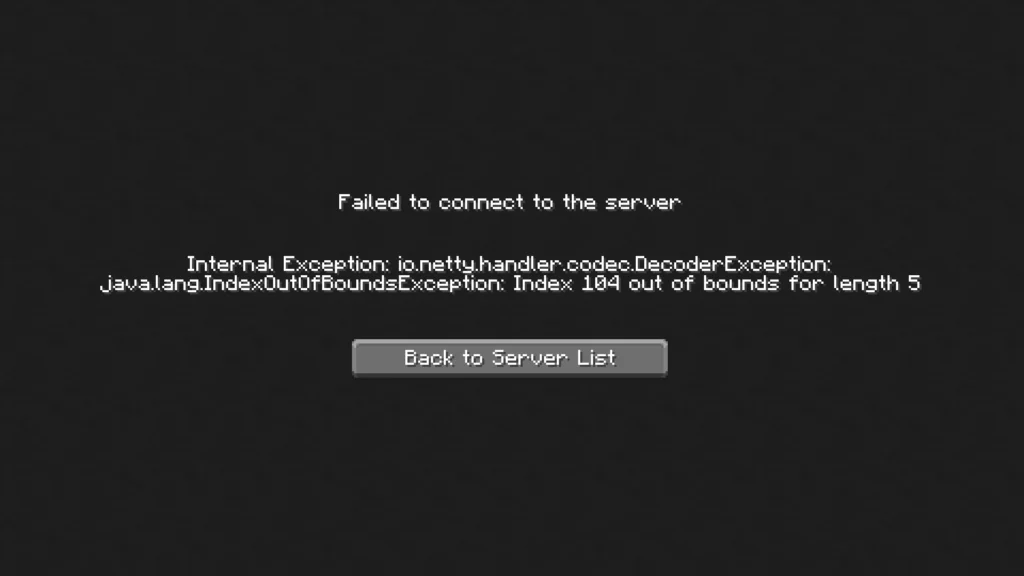
In the world of networking and web development, few issues can be as frustrating as dealing with an Internal Exception IO Netty Handler Codec DecoderException. This particular error is something many developers encounter when working with Netty, a popularframework for building network applications. If you’ve stumbled upon this error while working with Netty or related technologies, you’re not alone. This article will provide an in-depth analysis of the error, including its causes, common scenarios where it occurs, and how to troubleshoot and resolve it effectively.
What is “Internal Exception IO Netty Handler Codec DecoderException”?
A Brief Overview of Netty
Before delving into the specific error, it’s essential to understand what Netty is and how it relates to networking applications. Netty is a widely used Java framework for building high-performance network applications, such as web servers, HTTP clients, and realtimecommunication systems. It provides the tools to handle networking tasks such as packet encoding, decoding, and message dispatching.
Netty uses a series of channel handlers to process and manage incoming and outgoing data. These handlers form a crucial part of the pipeline through which data flows. A Codec handler, in particular, is responsible for encoding or decoding messages as they traverse the network. The DecoderException typically arises when an error occurs during the decodingprocess.
What is the “Internal Exception IO Netty Handler Codec DecoderException”?
The error message “Internal Exception IO Netty Handler Codec DecoderException” usually appears when there is an issue in the process of decoding incoming data from the network. The message indicates that an internal exception occurred during the execution of the Netty Handler Codec Decoder.
Decoding errors generally happen when the incoming data is not in the expected format or structure. This could happen due to several reasons, such as network issues, incorrect data being sent, or problems with the codec’s configuration. The DecoderException usually signals that Netty was unable to parse the incoming data correctly.
Causes of the “Internal Exception IO Netty Handler Codec DecoderException”
To understand how to resolve this error, it’s important first to identify the underlying causes of the issue. Here are some of the most common reasons why Internal Exception IO Netty Handler Codec DecoderException occurs:
1. Incorrect or Malformed Data Format
One of the most common causes of the DecoderException is receiving data that is not in the format expected by the codec. When Netty tries to decode data, it expects the incoming message to be structured in a particular way. If the data is malformed, incomplete, or corrupted during transmission, the decoder will fail and throw an exception.
For instance, if your application expects a JSON object but receives an incomplete or invalid JSON string, it will trigger a DecoderException. The same goes for other data formats like XML, Protocol Buffers, or custom formats.
2. Mismatched Data Length or Structure
Another cause of the error can be a mismatch between the expected length of the incoming data and the actual data received. For example, if your server or client expects a certain number of bytes to form a complete message, but the actual bytes are fewer or more than expected, the decoder will fail to decode the message properly.
3. Improper Configuration of Codec Handler
In Netty, a Codec Handler is responsible for converting data into an appropriate format for transmission and then decoding it back when it reaches the other end. If the codec is improperly configured—whether due to incorrect settings or missing handler components—Netty might throw a DecoderException during the decoding process.
Incorrect configuration might involve setting the wrong encoding or specifying incompatible message types for the codec. If the data doesn’t align with the expected configuration, decoding will fail, resulting in the “Internal Exception IO Netty Handler Codec DecoderException” error.
4. Network Latency and Packet Loss
Network latency and packet loss can also contribute to this error. If network packets are dropped or delayed, it can lead to incomplete or fragmented messages. When this happens, the Codec Decoder will be unable to process the data properly, resulting in the error message.
In situations where messages are split into multiple packets, and some packets are lost, the decoder might not have enough data to successfully decode the message, leading to the exception.
5. Incompatibility Between Client and Server
Sometimes, the issue might be caused by an incompatibility between the client and server codecs. If the client and server are using different versions of the protocol or data format, the Codec Decoder might not be able to properly decode the data sent by the client. This discrepancy can lead to the DecoderException error.
For example, a client might send data using a different version of a message format, while the server expects a different format. As a result, the server’s codec cannot decode the data, causing the exception to be thrown.
6. Insufficient Buffer Size
Another potential cause of the error is the buffer size being too small. When data is being transferred over the network, it is usually placed into buffers before being decoded. If the buffer size is insufficient to hold the incoming data, the codec will fail to process it correctly, resulting in a DecoderException.
This can happen if the system is configured with too small a buffer size for the expected message length or if the buffer management strategy isn’t tuned to handle larger-than-expected messages.
Troubleshooting and Fixing the “Internal Exception IO Netty Handler Codec DecoderException”
1. Verifying the Data Format
The first step in fixing the Internal Exception IO Netty Handler Codec DecoderException is to verify that the data being sent and received is correctly formatted. Make sure that the data adheres to the structure expected by the codec. You can use debugging tools or log the incoming data to check for any inconsistencies, such as malformed JSON or missing fields.
If you find that the data format is incorrect, ensure that both the client and server are using the same format and that any data serialization/deserialization is done correctly.
2. Matching Data Lengths
If the issue is related to mismatched data lengths, you will need to inspect the messages and ensure that the expected length matches the actual data being transmitted. In many cases, adding checks for the expected message size or ensuring that messages are split correctly across packets can help resolve this issue.
You can also use debugging logs to track the message sizes and verify if they match the expected length at each stage of transmission.

3. Correcting Codec Configuration
If the error is related to improper codec configuration, you will need to review your codec setup and make sure all handlers are configured correctly. Ensure that your Codec Handler is using the appropriate data encoding/decoding methods and that the correct message types are being processed.
Here are some key things to check when configuring your codec:
- Correct serialization format (e.g., JSON, XML, Protocol Buffers, etc.)
- Proper message type handling (ensure the codec knows how to handle the message types being sent and received)
- Buffer management (verify that the buffers used for encoding and decoding are correctly sized)
4. Handling Network Latency and Packet Loss
For issues related to network latency or packet loss, consider implementing more robust handling for incomplete or fragmented messages. Netty offers several ways to handle fragmented messages and reassemble them correctly before decoding.
You can also add retries for failed message transmissions to ensure that packets are successfully delivered and processed. This is particularly important for real-time communication systems or other applications that rely on the timely delivery of data.
5. Synchronizing Client and Server Versions
To fix incompatibilities between client and server codecs, ensure that both sides are using the same version of the protocol or message format. This could involve updating the client or server-side code to ensure compatibility or adding versioning to the messages to help the system handle different versions more gracefully.
Additionally, you can introduce version checks in the communication protocol to allow both sides to negotiate the correct format before sending and receiving messages.
6. Increasing Buffer Size
If the error is related to insufficient buffer size, increasing the buffer size might solve the problem. Netty provides various ways to manage buffer sizes through its configuration settings. Review the buffer size settings for both the encoder and decoder handlers and make sure they are large enough to accommodate the expected message sizes.
Increasing the buffer size can help ensure that the Codec Handler has enough memory to process incoming data without encountering errors due to insufficient space.
Conclusion
The Internal Exception IO Netty Handler Codec DecoderException is a common issue that developers face when working with Netty, but it can be resolved with the right approach. Understanding the potential causes—ranging from malformed data to configuration errors and network issues—can help you troubleshoot and fix the problem effectively. By following the troubleshooting steps outlined above, you can diagnose and resolve the error, ensuring that your Netty-based application functions smoothly.
With a little patience and attention to detail, you can keep your Netty application running without interruptions caused by decoding errors. Whether you are working with small-scale systems or large-scale enterprise applications, understanding how to handle Internal Exception IO Netty Handler Codec DecoderException is crucial for ensuring a seamless and robust networking experience.
